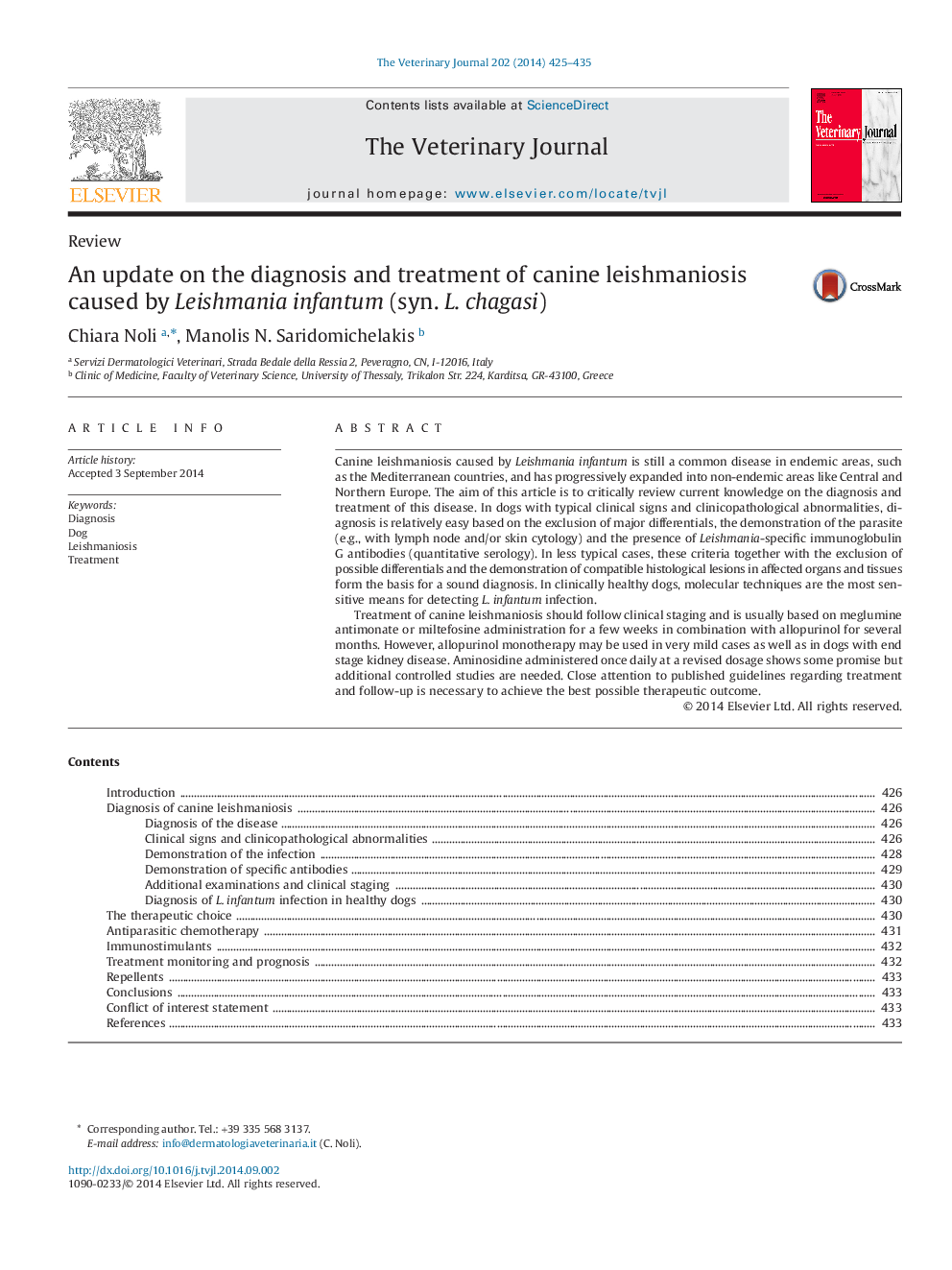| کد مقاله | کد نشریه | سال انتشار | مقاله انگلیسی | نسخه تمام متن |
|---|---|---|---|---|
| 5797754 | 1111760 | 2014 | 11 صفحه PDF | دانلود رایگان |

- CanL diagnosis is based on clinical and laboratory findings, serology and cytology.
- PCR is rarely needed to confirm the diagnosis of the disease.
- Therapy of canine leishmaniosis will depend on the clinical staging of the animals.
- Standard therapy is meglumine antimonate or miltefosine and long term allopurinol.
- Close monitoring of relapses and prevention of reinfection are pivotal.
Canine leishmaniosis caused by Leishmania infantum is still a common disease in endemic areas, such as the Mediterranean countries, and has progressively expanded into non-endemic areas like Central and Northern Europe. The aim of this article is to critically review current knowledge on the diagnosis and treatment of this disease. In dogs with typical clinical signs and clinicopathological abnormalities, diagnosis is relatively easy based on the exclusion of major differentials, the demonstration of the parasite (e.g., with lymph node and/or skin cytology) and the presence of Leishmania-specific immunoglobulin G antibodies (quantitative serology). In less typical cases, these criteria together with the exclusion of possible differentials and the demonstration of compatible histological lesions in affected organs and tissues form the basis for a sound diagnosis. In clinically healthy dogs, molecular techniques are the most sensitive means for detecting L.âinfantum infection.Treatment of canine leishmaniosis should follow clinical staging and is usually based on meglumine antimonate or miltefosine administration for a few weeks in combination with allopurinol for several months. However, allopurinol monotherapy may be used in very mild cases as well as in dogs with end stage kidney disease. Aminosidine administered once daily at a revised dosage shows some promise but additional controlled studies are needed. Close attention to published guidelines regarding treatment and follow-up is necessary to achieve the best possible therapeutic outcome.
Journal: The Veterinary Journal - Volume 202, Issue 3, December 2014, Pages 425-435